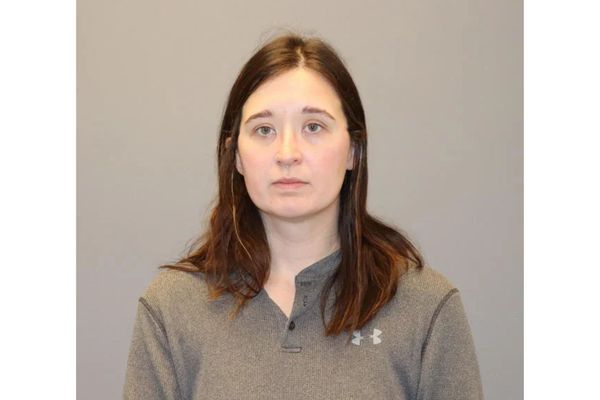
Two days after Donald Trump declared victory, the 6am Greyhound bus from Washington DC to Pittsburgh and on to Ohio and Kentucky is a quarter full when the exquisitely grumpy driver pulls away from Union Station and into the embers of morning.
Track one: Union Station DC, “My Country, ‘Tis of Thee”
Union Station is a grand and beautiful building, designed to adhere to several shapely classical styles at the beginning of the 20th century. Sharply declining after its 1940s heyday, it nearly collapsed in the early 80s, and, after COVID-19, is collapsing once more. During World War II tens of thousands of passengers would pass through every day. On the morning of Easter Sunday, April 9, 1939, one of those passengers was opera singer Marian Anderson, who arrived from Philadelphia and made her way through the triumphal arches of the entrance on the way to the steps of the Lincoln Memorial. There, Anderson performed a free concert for 75,000 people, many of them the political elites of the time. She had been denied the opportunity to perform at DC’s Daughters of Revolution concert hall on account of her skin colour — in response, first lady Eleanor Roosevelt resigned from the organisation and organised the Lincoln Memorial concert.
One book described the performance as “the concert that awakened America”, and when a 15-year-old Martin Luther King Jr won a speaking contest on the subject of “The Negro and the Constitution”, his entry heavily referenced the concert which he had heard live on the radio. During this period, Anderson was hugely successful, touring Europe and making the equivalent of several million dollars a year. But, as King’s oration pointed out, she still could not, at the time, “spend the night in any good hotel in America”. More than two decades later, in 1963, Anderson was present the day King gave his mythic, semi-improvised “I Have a Dream” speech from those same memorial steps.
Track two: McKinley High School, “St James Infirmary”
As the Greyhound headed north in the pale gold dawn, McKinley Technology High School slid by in silhouette. McKinley is about the closest thing to a shrine the mysterious RnB singer James Ray is ever likely to get.
Beyond his year of birth, the fact that he attended McKinley, two definite photos, and the year and cause of his death, all that remains of Ray is the music he recorded — less than an hour in total, a few singles and one deeply odd and piercingly beautiful album. It is nearly impossible to believe the extraordinary voice belongs to a man who may have been as young as 19 when it was recorded. He died in the early 60s in New York after he was dropped by his label and got hooked on heroin. No one knows where he is buried. His late collaborator and mentor Gerry Granahan later told Mike Fenton: “There was no funeral and he’s buried somewhere in Brooklyn. I contacted his mother in DC but she wouldn’t accept him — she just told me: ‘You just bury him up there.’”
In their early career, The Beatles regularly performed his minor hit “If You Gotta Make A Fool of Somebody” live after George Harrison had picked up a copy in Illinois. “We did a version of [it] because we thought it was such a wacky waltz. No one had a 3/4 number,” Paul McCartney would later say. “An RnB waltz, that was new!” Harrison would have his third solo number one with an ecstatic cover of Ray’s “I Got My Mind Set On You”.
With its odd time signatures, strange instrumentation (a tuba regularly takes the place of a bass guitar, while the RnB stomper “Welcome To The Floor” barely registers a drum kit behind the upstrokes on the guitar) the album may have had more of an influence on the sense of what was possible in the young Beatles’ percolating brains that Ray has received credit for.
Track three: Baltimore, “Strange Fruit”
Further north, past clusters of tents erected around the Patapsco River, past the Second Chance Inc. warehouse (“What is and what can be” spelt out in blocky orange letters across its facade), the Greyhound rolls on to Baltimore. Billie Holiday grew up here, sent by her mother to stay in the home of a cousin who beat her. At the age of twelve, she got a job scrubbing floors and running errands in a brothel so that she could listen to the music of Louis Armstrong and Bessie Smith on their record player.
At the age of 23, she recorded the seething, funereal “Strange Fruit”. It was based on a poem by Jewish communist Abel Meeropol, written in response to the lynching of two black teenagers, Thomas Shipp and Abram Smith, in Indiana in 1930. It opens:
“Southern trees bear a strange fruit/blood on the leaves and blood at the root.”
It was released on the independent Commodore label after Holiday’s usual label Columbia refused to release it.
Holiday’s father Clarence had been exposed to mustard gas during his service in World War I. He died at the age of 38 after being denied medical treatment at a Texas hospital for the lung disorder that had developed as a result. “[Strange Fruit] reminds me of how Pop died,” Holiday would write in her autobiography. “But I have to keep singing it, not only because people ask for it, but because twenty years after Pop died the things that killed him are still happening in the South.”
Holiday died at the age of 44. When she presented at the hospital, she was left untreated in a hallway for hours because of the physical evidence of her long-time on-and-off heroin use.
Track four: Berlin, Pennsylvania. “dlp 1.1”
In the accelerated, unseasonably warm Fall this year, many of the trees that line the road in Pennsylvania’s south west are already barren, but a little over half still have leaves the colour of bronze, blood and flame. A little after the Allegheny Mountain Tunnel and a little way before Somerset, the trees rear up close to the road, thin as cell bars, as you pass through the region where, 10 miles to the north, United Airlines Flight 93 crashed on September 11, 2001. The hijackers were apparently overpowered by passengers before they could reach their intended destination, possibly the Capitol building in DC.
On the morning of the attacks, William Basinski, an experimental composer, had received an eviction notice from his Brooklyn apartment while preparing for a job interview with an arts organisation at the World Trade Centre.
“Luckily for those kinds of jobs, the interview isn’t at eight o’clock in the morning, it’s at 11, and by then the buildings were gone,” he later said.
After the towers had collapsed into rubble, Basinski went on his roof and fixed a camcorder on Lower Manhattan while playing a recently completed work that had captured the sound of a loop of slowed, easy-listening music as the tape decayed and disintegrated. It would eventually be released as “The Disintegration Loops”.
Writer Masha Gessen has said, given everything it unleashed, September 11, 2001 may be remembered as America’s equivalent of Germany’s Reichstag fire.
Track five: Pittsburgh Intermodal station, “Circles”
The road inclines, climbing over the loops of freeways and the knots of liminal spaces — chain motels, billboards of personal injury lawyers, great flat warehouses — at the outskirts of Pittsburgh. At the Kamala Harris rally in the city on November 4, one of the journalists wore a green and white cap that read “I miss Mac Miller”. Born Malcolm McCormick in Pittsburgh in 1992, his 2011 breakout hit, “Donald Trump” is one of scores of hip-hop songs to reference the 45th and 47th president of the United States. In the aftermath of the 2024 election, it re-entered the US top 40. Miller died in 2018 of an accidental overdose of cocaine, alcohol and fentanyl.
Fentanyl is one of the many arms of the “opioid crisis” in the US. Barrelling through weak regulation from the mid-90s onwards, powerful painkillers were aggressively pushed by pharmaceutical companies and over-prescribed by doctors to become a standard part of millions of American lives. Opioids have killed nearly three-quarters of a million Americans in the first quarter of the 21st century.
“Circles” is Miller’s delicate, melancholy and drowsily melodic posthumous 2020 album. Its first line is: “Well, this is what it look like, right before you fall.”
As a way of rounding off his This American Carnage series, Charlie Lewis has compiled the following playlist for readers to listen to.







